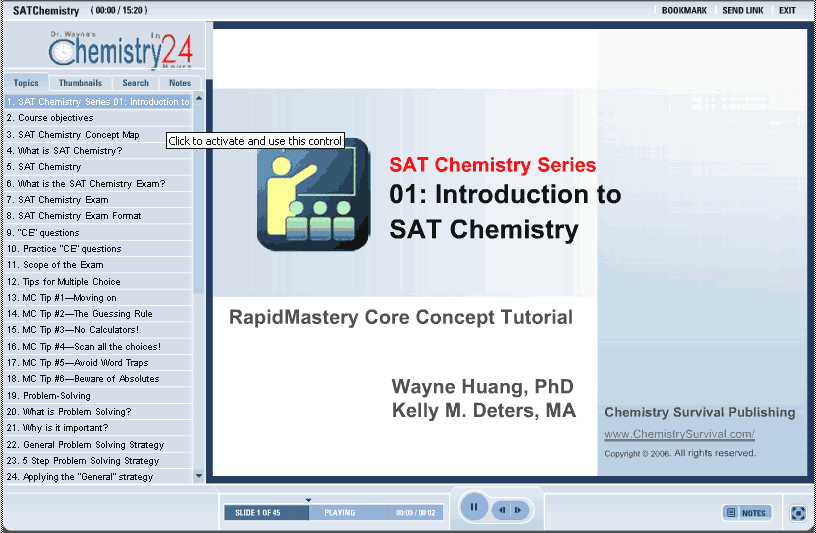
Students are expected to have a foundational understanding of Honors Chemistry topics in order to investigate more advanced concepts (see Prior Knowledge and CP vs. What information from Honors Chemistry should I know going into AP Chemistry? AP Chemistry is a "second year" high school course that is roughly equivalent to an introductory college chemistry course. Pursue your own interests and take level-appropriate classes. Many students are not ready to take such a rigorous course as a sophomore, especially if you are also enrolled in other AP/Honors classes.and that is perfectly ok! Taking AP courses is not worth negatively impacting your mental health with the sole goal of boosting your GPA or making yourself more competitive for colleges. False! Students who are interested in chemistry have the opportunity to take AP Chemistry, but it is not a requirement for college, even if you are planning to study science in the future. Every single score is necessary to bag a seat in the top-ranking universities, and therefore, candidates should go through all the SAT 2 chemistry book.2. Candidates should rigorously follow SAT chemistry book which ranks the highest and get themselves prepared. Though there are candidates securing admission even with lower scores it is generally advised to aim for higher scores. Similarly, for SAT subject tests, top universities like MIT required above 700. Generally, most of the top universities require a high SAT score of around 700 for admission.

Then write the answer in the bubble in the answer sheet. Candidates need to select one answer that suffices all the questions or statements. Classification questions: Here, candidates will find a list of choices that can be applied to a group of numerous questions.For cracking the SAT subject test in Chemistry, candidates need to know each question type: The Collegeboard SAT chemistry subject test comprises three categories of questions. SAT Chemistry Subject Test: Question Types Candidates can start by practicing from SAT chemistry practice test PDF, and consulting a SAT 2 chemistry book. SAT chemistry subject test is mostly filled with theoretical concepts and less numerical ones and also the SAT 2 chemistry curve. SAT chemistry formula sheet along with SAT chemistry tips are helpful preparation materials. SAT chemistry subject test is not hard but requires rigorous practice and dedication. Reaction rates, potential energy diagrams, activation energiesĬonservation of energy, calorimetry, enthalpy, heating/cooling curves, entropyįundamental elements, ions, compounds, periodic trends, the reactivity of elementsĪwareness of lab equipment, measurements, procedures, observation, security, calculations, data analysis, and more LeChâtelier's principle, equilibrium constants & expressions Molar mass, Avogadro’s number, empirical/molecular formulasīalancing, calculations, percent yield, restricting reactants
#Sat chemistry calculator series#
Identification of oxidation-reaction reactions, combustion, oxidation count, activity series Molarity & percent by mass concentrations, solution preparation & stoichiometry, factors affecting the solubility of gases/liquids/solids, colligative propertiesīronsted – Lawry theory, strong/weak acids, pH, titrations, indicators

Intermolecular forces in solids/liquids, phase changes & diagrams Kinetic molecular theory, gas law connection, molar volumes, density, stoichiometry

Ionic, covalent, metallic bonds, the connection of bonding to properties & structures, intermolecular forces, Lewis structures, 3-dimensional molecular shapes, polarity Experimental testimonies of atomic structure, quantum numbers, energy levels, electron configurations, periodic trends


 0 kommentar(er)
0 kommentar(er)
